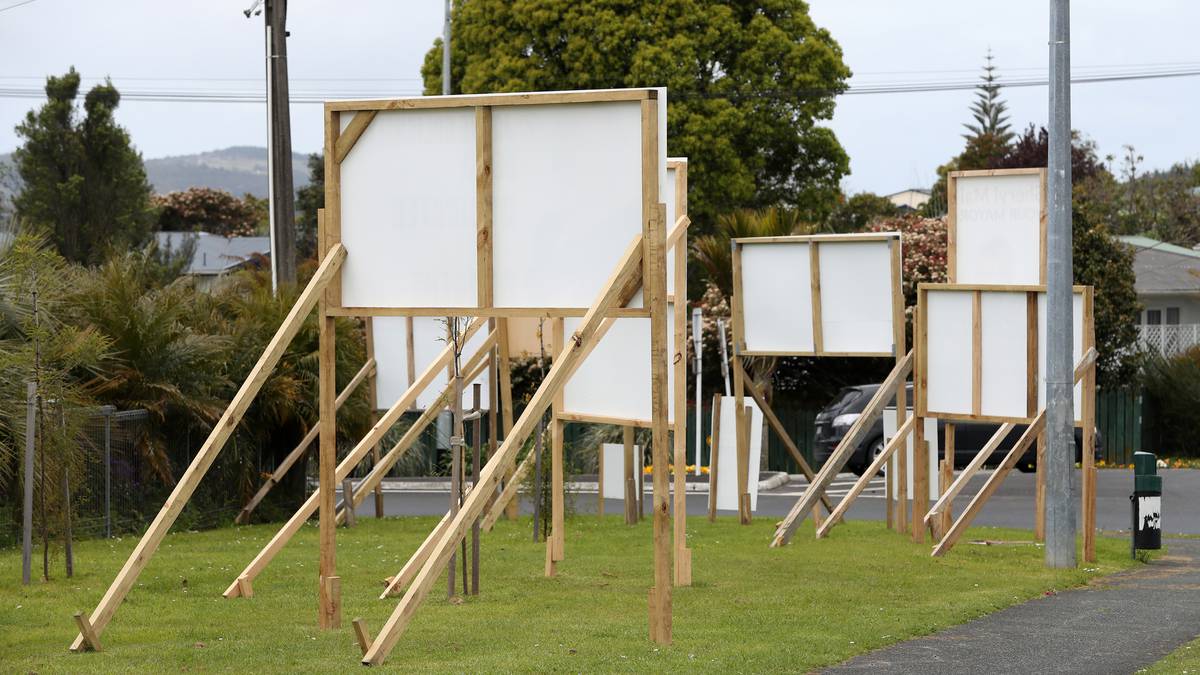John Williamson is questioning the need for local government election hoardings. Photo / Michael Cunningham
OPINION
It’s that time in the electoral cycle that our main roads are ablaze with “vote for me” signs.
Most drivers tolerate this visual clutter and look for the innovation and creative messages which might turn their heads to vote for any of these aspirants.
The trouble is that when you turn your head for any length of time while driving, you take your eyes off the road. Twenty seconds of distraction at 50km/h means that you travel 30 metres while blind.
But how else can you economically get your message and profile across to the voting public and let them know that you are serious about getting elected? Are roadside signs a necessary part of that process?
I have been part of a number of election campaigns and conclude that roadside signs are a vital part of any serious election campaign.
My first campaign, though, was in a rural ward and did not include signs. I figured that I needed to get an innovative message into specific mailboxes a number of times and that a media campaign would be an expensive waste of time.
I created a “things to do today” pad, with ticking the right box as the highest priority. I then had three different election newsletters delivered with a Mintie stapled to the top of each and the message “Something For You To Chew Over”.
I was accused of bribing the electorate but the campaign worked – without signs.
A subsequent campaign in an urban ward needed a different strategy – 7000 “Things To Do Today” pads would be a challenging logistical nightmare for family delivery and the Mintie was a bigger challenge to staple to newsletters.
So, a pineapple lump, carefully and hygienically inserted into a plastic sleeve, stapled to two separate newsletters and hand-delivered to 7000 mailboxes with the message “Something For You To Chew Over” worked out. Plus we had 40 small roadside signs.
Again, I was accused of bribery and it was interesting noting a couple of kids who followed about 100 metres behind my delivery and removed the sweets from the newsletters.
Managing the signs was a regular challenge. Some were removed, some were damaged and a couple had my face enhanced with mascara.
I did get compensation from one young fellow who was caught by the police and ordered to pay up with an apology.
The only time though when you can be sure that you can get your message across is in the voting handbook when, with 200 words, you can nail it.
The only trouble with that and with alphabetic voting is that voters run out of ticks before they get to the last name on the list. So I implored in all messages to “Tick The Last Name First”. All the best to those aspirants with surnames in the second half of the alphabet!
You need roadside signs to get your name and face out there ahead of the voting papers arriving in electors’ mailboxes.
But the question remains about how effective they are at alerting voters and driving behaviour in a general sense.
A recent research review of 90 unique documents to assess the potential safety impact of roadside advertising concluded that “it is not possible to definitely conclude that there is a direct relationship between driving behaviour changes attributed to roadside advertising and road crashes”. So there you go.
Traffic signs are important. They provide consistent rules to all drivers and are mostly easy to understand.
Signs give warnings about things that are not immediately obvious and they serve to keep drivers, cyclists and pedestrians safe. Traffic signs help you to get to where you want to go and they work 24/7.
The visual clutter of election signs needs to be removed before the election day of October 8, when they will have done their job for our new mayor and councillors.




